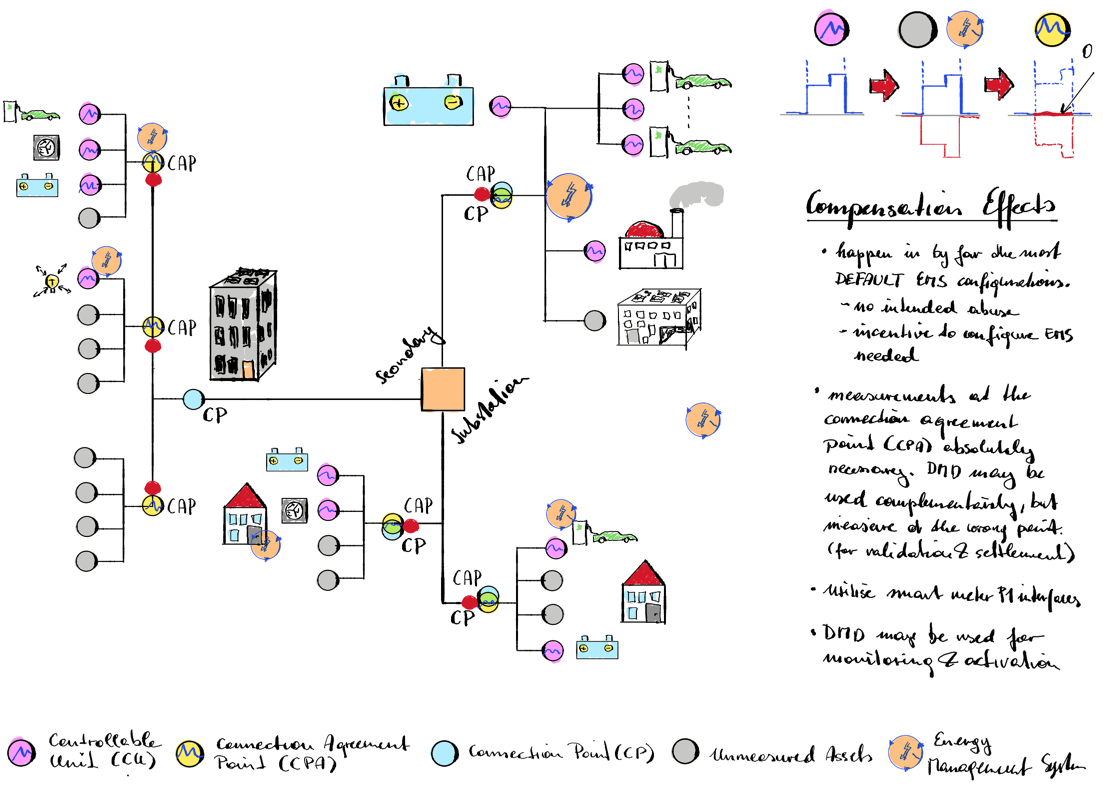Network Code on Demand Response Issue II - Definition of Compensation Effect
June 25, 2025
In our next session on important issues with the current version of the ACER review of the upcoming European Network Code on Demand Response, we are highlighting another breaking change that will lead to a lot of trouble if not corrected - the Definition of Compensation Effect
In order to understand the issue, it is important to review what ENTSO-E and EU DSO Entity had written in their proposal ( see [here] ) - firstly the definition of 'compensation effect'.

Compensation of sold flexibility services intendedly to be provided by behind-the-meter assets - probably measured by DMDs - will happen in the default scenario AND: not only because of 'other (activated or non-activated) controllable units' (also technical resources that are not known or not measured or not registered will contribute). Home Energy Mangement and Building Automation Systems are focussed on optimising/minimising the inflow/outflow at the connection agreement point / the exchange point with the distribution grid (usually targetting the point where smart metering systems are deployed. This is also what most procuring system operators will define as the point of delivery / service validation point. Only flexiblity that arrives in the grid can be paid for. Otherwise society as a whole will have to pay for services procured by systems operators that never arrive. Also we need to consider that SOs will procure flexibility in critical phases of grid operation, and a failure to deliver these services will have a big negative impact. If delivery is not reliable SOs will turn to other solutions, which will have a very negative effect on the development of market-based solutions.
System Operator Proposal
(48) ‘Compensation effect’ means the alteration of generation or consumption of other nonactivated technical resources in the time frame of a delivery of a local or balancing product, that compensate for the effects that the activation implies.

The picture above shows potentially registered 'controllable unit's colored in pink. Gray circles indicate 'technical resources' that are not necessarily registered as 'controllable units' behind the same connection point. In the upper right, you see an indication that activated behaviour change doesn't arrive at this point. In order to provide a good and implementable regulation on this, it is very important to differentiate between 'technical resource', 'controllable unit', 'connection point' and 'connection agreement point', with the latter indicating the end of customer premises - and with that the link between public infrastructure and the parts that can be attributed to a final customer's responsibility.
The Issue
IMPORTANT: The big problem is that these compensation effects will lead to flexibility being paid but not delivered to the grid. The upcoming implementing regulation proposals define a so-called service validation point, that defines where flexibility services need to arrive. There, it must be possible to have - ideally - measurements (e.g. from the near real-time interface that must be available for every smart metering system systematically rolled out after July 2019 as of Article 20 of Directive (EU) 2019/944, or through validated historical data / billing timeseries or reliable calculations, or a mixture of either. Validating the reflection at this point is therefore super important - and a decisive for reliable markets.
NOTE: Please note that these effects will happen in the DEFAULT-Configuration of most Home or Building Energy Management Systems, so it is not a matter of acting mala fide or in an erroneous sense. Therefore, getting this definition not right will invalidate many other parts of the Act.
Recommendation
The final version of the code must clearly refer to ALL compensations of activations at this Connection Agreement Point.
- It must be made clear that data and measurement requirements and the degree of reflection at the SVP must be defined by the Procuring System Operator in the product requirements. A possiblility for a corrected definition:
‘compensation effect’ means the alteration of injection or withdrawal by any technical resource different from the concerned controllable unit of the activated SPU or SPG, during the activation period of a local or balancing service, which counteracts the effects of the activation at the service validation point;
